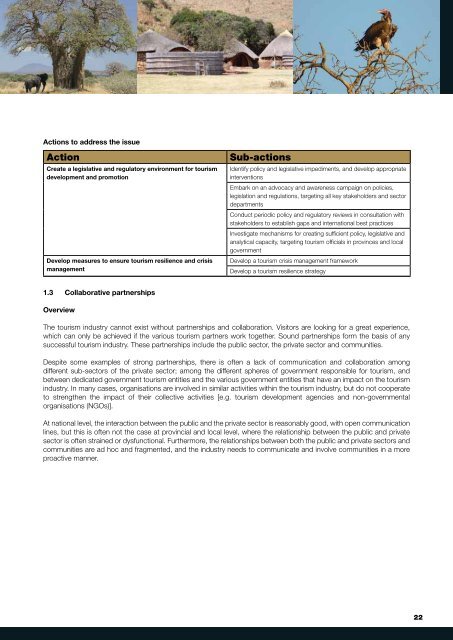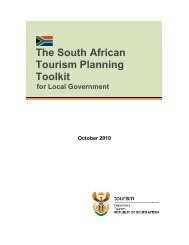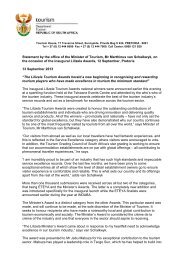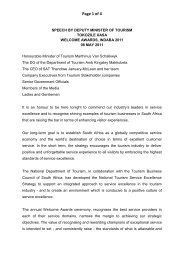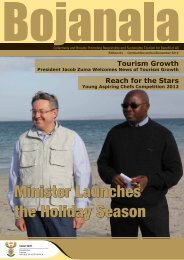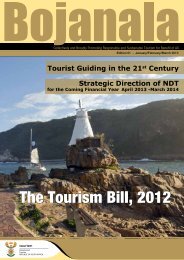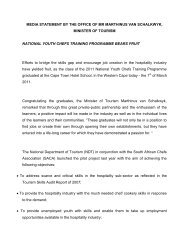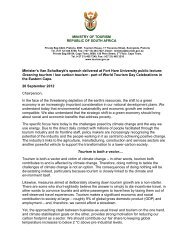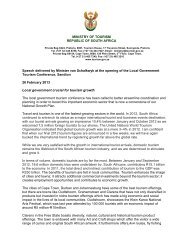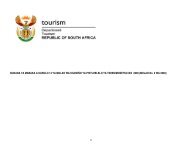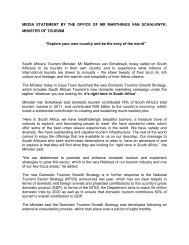National Tourism Sector Strategy - Department of Tourism
National Tourism Sector Strategy - Department of Tourism
National Tourism Sector Strategy - Department of Tourism
- No tags were found...
You also want an ePaper? Increase the reach of your titles
YUMPU automatically turns print PDFs into web optimized ePapers that Google loves.
Actions to address the issueActionCreate a legislative and regulatory environment for tourismdevelopment and promotionDevelop measures to ensure tourism resilience and crisismanagementSub-actionsIdentify policy and legislative impediments, and develop appropriateinterventionsEmbark on an advocacy and awareness campaign on policies,legislation and regulations, targeting all key stakeholders and sectordepartmentsConduct periodic policy and regulatory reviews in consultation withstakeholders to establish gaps and international best practicesInvestigate mechanisms for creating sufficient policy, legislative andanalytical capacity, targeting tourism <strong>of</strong>ficials in provinces and localgovernmentDevelop a tourism crisis management frameworkDevelop a tourism resilience strategy1.3 Collaborative partnershipsOverviewThe tourism industry cannot exist without partnerships and collaboration. Visitors are looking for a great experience,which can only be achieved if the various tourism partners work together. Sound partnerships form the basis <strong>of</strong> anysuccessful tourism industry. These partnerships include the public sector, the private sector and communities.Despite some examples <strong>of</strong> strong partnerships, there is <strong>of</strong>ten a lack <strong>of</strong> communication and collaboration amongdifferent sub-sectors <strong>of</strong> the private sector; among the different spheres <strong>of</strong> government responsible for tourism, andbetween dedicated government tourism entities and the various government entities that have an impact on the tourismindustry. In many cases, organisations are involved in similar activities within the tourism industry, but do not cooperateto strengthen the impact <strong>of</strong> their collective activities [e.g. tourism development agencies and non-governmentalorganisations (NGOs)].At national level, the interaction between the public and the private sector is reasonably good, with open communicationlines, but this is <strong>of</strong>ten not the case at provincial and local level, where the relationship between the public and privatesector is <strong>of</strong>ten strained or dysfunctional. Furthermore, the relationships between both the public and private sectors andcommunities are ad hoc and fragmented, and the industry needs to communicate and involve communities in a moreproactive manner.22


